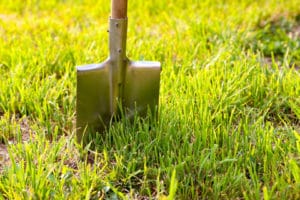 Dethatching is an important step in lawn maintenance. This process removes thatch, the buildup of dead grass roots, stems, and debris that forms between the soil’s surface and the grass blades above ground. Too much thatch impedes healthy lawn growth in a number of ways. A thick layer of thatch creates a barrier that obstructs water, sunlight, fertilizer and nutrients from reaching the grass’s roots. It provides an environment that encourages pests, fungi and diseases. When added together, these conditions make for an uneven lawn, which leads to uneven mowing and unintentional scalping.
Dethatching is an important step in lawn maintenance. This process removes thatch, the buildup of dead grass roots, stems, and debris that forms between the soil’s surface and the grass blades above ground. Too much thatch impedes healthy lawn growth in a number of ways. A thick layer of thatch creates a barrier that obstructs water, sunlight, fertilizer and nutrients from reaching the grass’s roots. It provides an environment that encourages pests, fungi and diseases. When added together, these conditions make for an uneven lawn, which leads to uneven mowing and unintentional scalping.
Attempts to overseed a lawn with excessive thatch can be thwarted when the new seeds can’t reach the soil. Often, new grass will root in the nutrient-lacking thatch, forming a shallow-rooted lawn that is far more susceptible to environmental stress.
Dethatching, however, primes your lawn for overseeding by exposing more soil. It simultaneously grooms grass roots close to the surface, leaving new roots room to grow, and unearths weeds and crab grass. Four Seasons landscapers use dethatching along with aeration, top dressing, and overseeding to optimize your lawn’s health and splendor.
